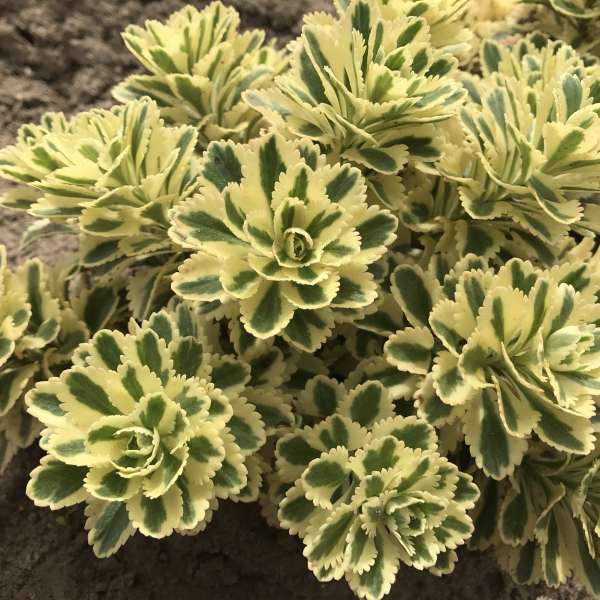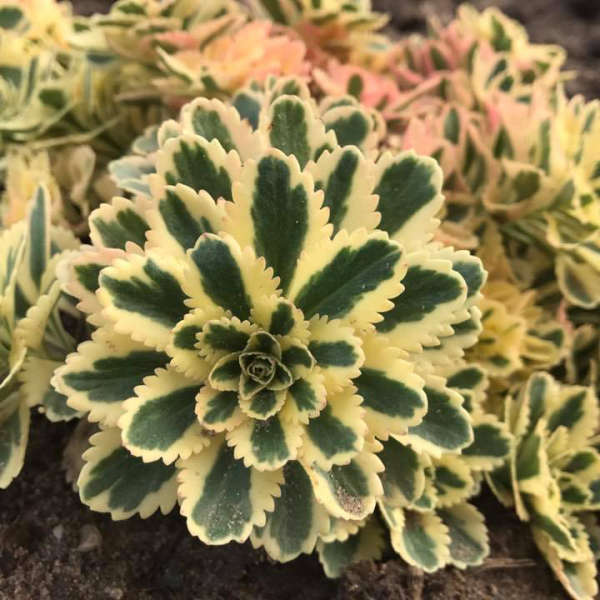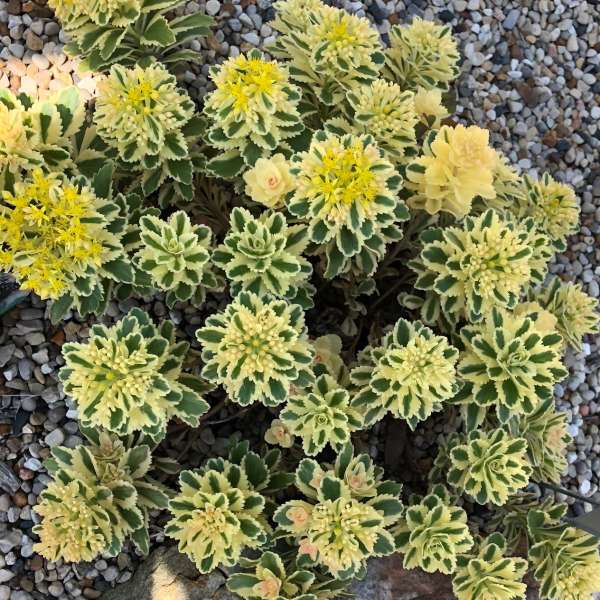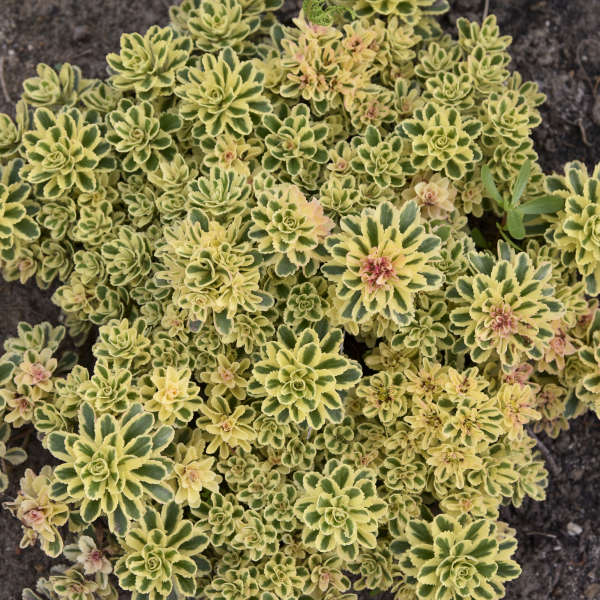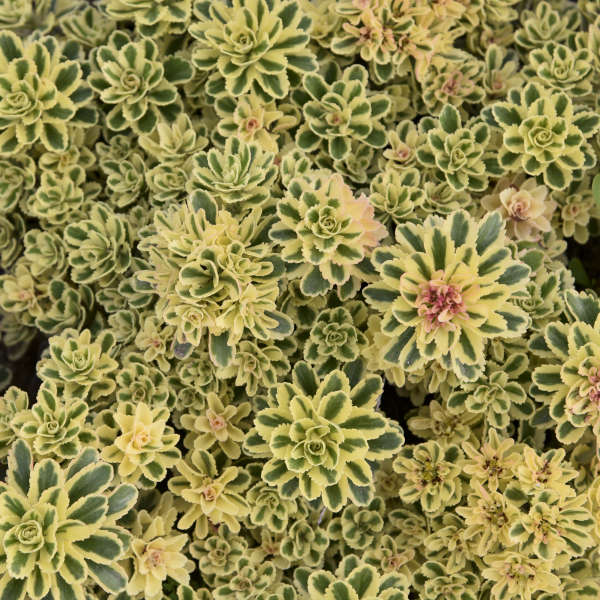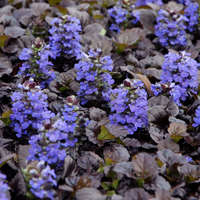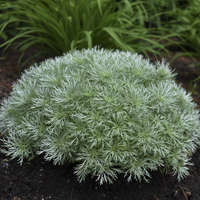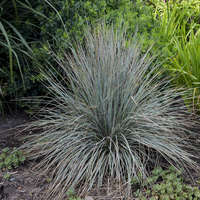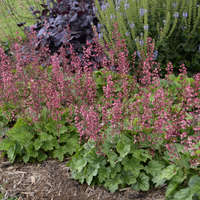Sedum takesimense ATLANTIS® ('Nonsitnal' PP27454)
Common Name: Stonecrop
This is no ordinary Sedum! You can't help but stop and stare at this beautifully variegated groundcover stonecrop from Hortech, Inc. Small, serrated leaves are dark green with very wide creamy yellow margins. From a distance, the margins are what catch your eye. You may notice that the creamy margins become tinged with pink blush tones with cold temperatures late in fall. A great choice for tucking into rock gardens or dry landscapes, or in combination container with succulents!
Low, spreading sedums form a solid mat of foliage which is excellent for covering slopes or can be planted as a groundcover in sunny, dry areas. They are extremely drought tolerant and many are evergreen. These are terrific low-maintenance plants that always look their best.
